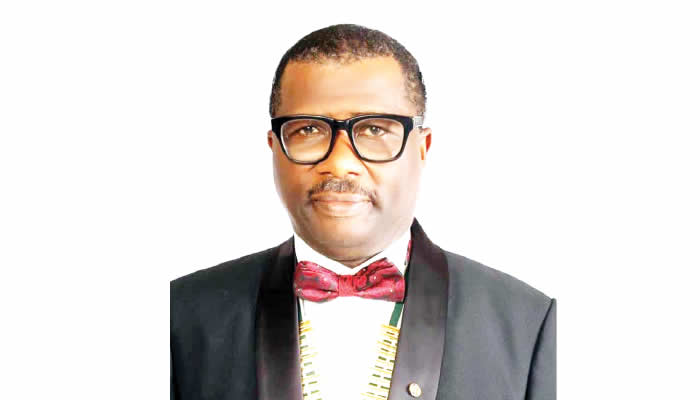
The President of the Nigerian Institute of Architects, Enyi Ben-Eboh, speaks with DAMILOLA AINA on the role of architects and architecture in Nigeria’s built industry
It is often assumed that architects are for the elite. Is that why we are having increased building collapses?
I would like to categorically state and inform the public that architects are not for the elite only. As a matter of fact, anyone who wants to build must engage an architect. An architect is a professional that has been trained to design buildings and it is just like someone who is sick and decides to see a carpenter instead of a doctor. The carpenter has not been trained to treat sick people and would fail woefully. So, architects are the real professionals needed whenever people need to build their houses.
This role of an architect has been evidently seen in the recent building collapse. I am of the opinion that the buildings that have collapsed do not have an architect supervising the construction. Like I always say, buildings that have architects supervising them would hardly have any problem because he would ensure the right professionals are engaged.
The professionals will do the right things to make the building stand. In the building process, there are a lot of other professionals who are also involved in putting it together: Architects, structural, mechanical, electrical engineers, builders, and one or two other professionals. Their inputs are necessary for making sure the building is properly built and free of defects.
I advise Nigerians to disabuse their minds of the notion that architects are for the elite, it is not true. We are designed for all segments of society.
Quackery is becoming rampant in the built environment. What is the institution doing to solve this?
Quackery is simply about people who don’t have the requisite skill to either design, supervise the construction of buildings or engage in related activities. There are laws specifying who should be involved in the process, but of course, even though the laws are available, there is a need for officers to ensure that the laws are obeyed. In Nigeria today, issues of development control are vested in the states, so every state sets up a physical planning and development agency to ensure that every building erected within the confines of that state is designed and supervised by the right professionals, but the missing link is that when it gets to the post-approval stage, a lot of clients don’t involve the professionals and once they get approval, anyone can say, “I have built several houses in the past so let me build for you,” and that in itself is part of the problem that has led to all manner of buildings without certifications going into the building construction process.
Also, there is a dearth of technical skills in the construction process. We have an educational system that has not helped the situation, and we are concerned with who is a registered architect, engineer, or town planner. Nobody is concerned about the mid- and lower-level of the value chain. So, anyone can claim to be a bricklayer, meanwhile he doesn’t know what a mortar is. Another says he is a carpenter but doesn’t know what type of joint to use for different kinds of construction. That in itself is a problem whereby our artisans are not adequately trained again. As a society, we look down on those skilled artisans and everybody wants to be a graduate.
We have lots of people parading themselves as degree holders who cannot be useful to society. To solve this, we have to ensure that relevant agencies saddled with training and certifying artisans live up to their billing and make sure the government encourages technical education so that everyone who engages in building activity has undergone the requisite level of training and is able to carry out his duties professionally.
The problem is that people don’t want to do the right thing because they think they can get away without any repercussions. A man who studied anything can decide to say, “I’m a contractor” or someone who has a slight knowledge of technical drawing in secondary school will begin to parade himself as an architect because he can draw one or two lines.
What are the challenges faced by architects, and what can the public do to help professionals?
I think the question should be the other way. Architects are not asking for help from the public, but the public should rather seek help from the architect because putting up a building is a very heavy investment by any consideration and you don’t want to waste so much money on projects only for the outcome to be unpalatable. Ours is to educate the public to know that whenever they want to put up a building, they should ensure that the service of an architect is contracted.
Even though a lot of people parade themselves as architects even when they are not, sometimes even other professionals within the built environment carry themselves as people who can do designs for buildings. But for the public, you should know that only registered architects under the Architects Registration Council of Nigeria are entitled or authorised to design buildings for construction.
Also, I want to use this opportunity to inform the public to disabuse their mind of any notion that architects are expensive and elitist. For instance, when anyone wants to rent a house or buy land, an individual is ready to pay 5-10 per cent agency as legal fees to people who are just agents. A building is a major thought process and not something that should be taken lightly.
You can’t quantify intellectual input into putting up a building. A lot of people think it is just a piece of paper, but that paper and the process that goes into it often take several years of training to apply.
For the public, I reiterate that they should engage the services of an architect in the design of your buildings. Of course, we are not the only ones involved in the process. As I said, once the architect comes up with the design, he has to engage the services of other professionals. The client would also have to get a quantity surveyor to know how much it will cost and a builder at the post-approval stage.
The whole essence is to inform the public that they should only use qualified and registered professionals in carrying out their building designs and construction.
What are the ethics of architects and the punishments for violation of those ethics?
Yes, architectural professionals are bound by certain ethics. There are certain things an architect should not do and if an architect is involved in certain things, he will be reprimanded by the regulatory authority and bodies. For instance, an architect is not permitted to encourage his client to circumvent the planning laws. An architect is not encouraged to give the client any leeway to cut corners either in terms of quality, the materials used, or compromising the standards that exist. If he does these, then he is liable for some sanctions.
What is the impact of architects and the institution on the construction sector?
The impact of our profession on the construction sector cannot be overemphasised. Under our standard form of contract and within the building industry, an architect is the leader of a building team and so his role is very important. He coordinates the activities of other professionals and ensures their input is done in a way that meets the original design which is borne out of what the client has given in his brief.
We are very important not just at the design stage but during construction. An architect ensures that the stipulated quality and quantity are met during the building process because when valuations are prepared, he has to verify that those quantities mentioned by the quantity surveyor were followed to the letter.
The architect also signs off for the client to pay a contractor and ensure that all procedures and standards were met during construction.
As an institute, we have also tried to play that role within the industry. What we are preaching these days is collaboration so as not to work as a single entity. We intend to partner with all relevant bodies because the current surge of building collapse is an embarrassment to all of us as professionals. It is not a case of anybody exonerating themselves from the blame, it is an avenue for us to work together and fight this menace once and for all.
There has been a recent advocate for green building. Can you please explain what green buildings are? Is it an innovation for the future?
The advocacy for green buildings and sustainable designs and construction is an aspect that has become very topical in the recent past because right now, the world is talking about sustainability in terms of natural resources and the emission of greenhouse gases. There is a movement within the architecture family to encourage architects to design sustainably.
Sustainable design has to do with the use of materials that are easily available and replaceable materials that don’t affect the environment negatively, materials that are eco-friendly and even the choice of energy transition that enforces us to renewable energy. So, part of the drive is to ensure that even in the designs, we ensure that we use materials and techniques that ensure that we don’t pollute the environment too badly.
We must also ensure pollution through generators and all the like is eliminated. We are incorporating the plans within the building space to become user-friendly. As we all know, human beings need oxygen which plants give out and human beings give out carbon dioxide which plants need. So, the incorporation of plants within the habitable space makes the environment sustainable and friendly for human health. Of course, this year, the theme of the World Architecture Day is “Design for health.” Even as architects globally, it has been inculcated into our mantra in recognition that recent pandemic has affected the way we design our buildings.
Can you please give the public an explanation of trending architectural design and new design ideas?
Architecture design like fashions exists within the context of environment and materials. I see a lot of designs these days that people just copy blindly from other climes. An architect should not copy things hook, line and sinker. We have to look at environmental conditions and context within which the building is placed. What works in Lagos, for instance, may not work in Kano because the environment is quite different – likewise for other states. That is why an architect is not someone who sits down and puts down lines. He does some research for every project; he does some preliminary research to put the design in context and ensure that even though he may have more materials because of what has been incorporated into the design, some designs won’t work in certain places, which is why an architect will ensure that the design suits our local climate, social and economic consideration.





